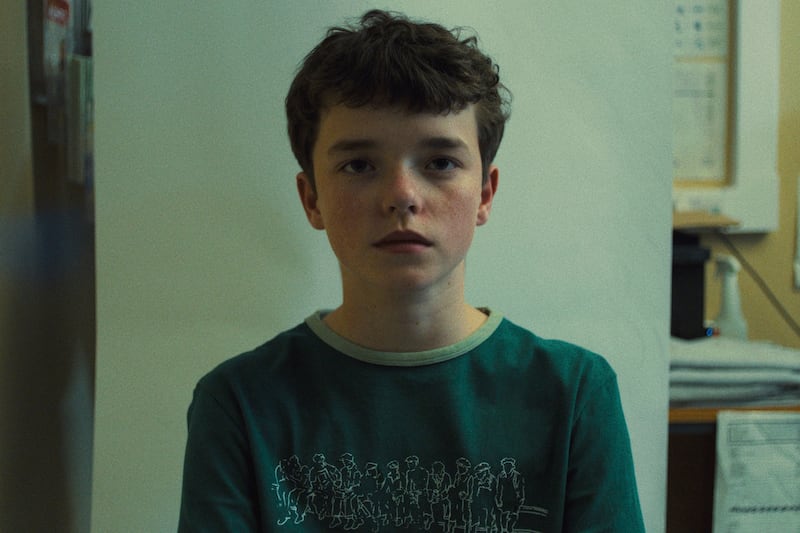It was a case of now or never.
My partner, Fiadh, and I had spoken for 10 years of our desire to travel and see the world. We wanted to go way off the beaten track as Fiadh loves wildlife and I love adventure, but doing that with kids would be a non-starter. Having both reached our 30s, we realised that if we did not go now we would never go.
So we did it. I resigned from my job, Fiadh took a year’s absence from hers, and in January we landed in Mexico for the start of an around-the-world adventure. Travelling mostly by bus — 121 bus journeys and counting — we have now been through 13 countries, covering most of Central America and western South America, from Yucatán, in Mexico, to Tierra del Fuego, at the southern tip of Argentina.
It is by no means a luxury journey. By staying in hostels — usually the cheapest we can find without taking too much of a security risk — using buses as much as possible, spending longer in cheaper countries, haggling and trying to eat where locals eat, we make the budget stretch further.
Nothing compares to spending two weeks deep in the Amazon rainforest in Ecuador, staying with hunter-gatherer tribes
We’ve had some sensational experiences, including visiting the ruins of the Maya cities of Chichén Itzá, Yaxchilán and Palenque, in Mexico, and, best of all, the pyramids of Tikal in Guatemala. We climbed the 3,975m Acatenango volcano in Guatemala, and from there saw enormous night-time eruptions of lava from Volcán de Fuego. But nothing compares to spending two weeks deep in the Amazon rainforest in Ecuador, staying with hunter-gatherer tribes of Secoyas and Kichwas. I learned more about life in that fortnight than any other in my life. Their way of life is entirely different from ours and the rainforest’s wonder is hard to put into words.
Everywhere you look life of all kinds is bursting forth, striving to survive and thrive. We saw countless species of birds, mammals, reptiles and fish. The jungle is no joke, either: you need to be vaccinated against several diseases, do battle with mosquitoes and be conscious of snakes at all times. Ever since learning that our bodies and minds evolved for the hunter-gatherer way of life and not our modern one, I have wanted to meet people who lived like that, to learn more. The tribes we met were incredibly resilient, but they have their problems, as all societies do.
I had endless questions for them. Living in the Cuyabeno reserve, the tribes depend on hunting, fishing and gathering for nearly all of their food. They have clothes, small wooden houses, guns for hunting and even, in some cases, mobile phones, but they have almost no electricity and there are no shops or roads. Their knowledge of the rainforest and the natural world is mesmerising. The chief of one tribe took us on a tour where he showed us all the plants that are useful for various ailments. That made the rainforest feel like a pharmacy. He even showed us some whose medicinal uses were, he said, unknown to western science.
Our exceptional guide, Jacob Tangoy from Rio Delfin Expeditions, was a Kichwa who grew up in the jungle; he told us countless fascinating stories about life there. He also told us about other tribes that live there, their different cultures and laws. He told us stories about the two isolated tribes in Ecuador, the Taromenanes and Tagaeris, who fiercely resist contact with the outside world.
When travelling to where our Amazon journey began, we drove for 30 minutes through palm-oil plantations. It was heartbreaking
We came away with a different, and deeper, understanding of what life is and how it works. We learned how all life competes to survive but the key strategy that we humans have is to be hyper-cooperative in our communities. It was made very clear to us that surviving on your own in the jungle is a non-runner. You need your community, and your community needs you. There is a lesson for all of us in that. Sadly, when travelling to where our Amazon journey began, we drove for 30 minutes through palm-oil plantations. Until 15 years ago this was unspoiled rainforest. It was heartbreaking.
When I asked one Secoya chief what was the most incredible thing he had ever seen, he said it was seeing how much of the rainforest had been destroyed for these plantations. He couldn’t believe his eyes when he saw it. All those palm-oil-filled cakes and protein bars back home have a very dark story behind them. We know just how fortunate we are to be doing this, something we remind ourselves of constantly. We’ve a long way to go yet, but we both agree that going on this adventure was the best decision of our lives.
Cónán Ó Broin, who is from Clondalkin, in Dublin, was political director of the Labour Party and, before that, a spokesman for the Central Bank of Ireland. Fiadh Ní Dhonnchadha, who is from Maynooth, in Co Kildare, is a cartographer for Jacobs Engineering, making maps for new infrastructure projects in Ireland and abroad
If you live overseas and would like to share your experience with Irish Times Abroad, email abroad@irishtimes.com with a little information about you and what you do



















